One-Eyed Giant Polyphemus – Most Famous Of The Cyclops In Greek Mythology
Ellen Lloyd - AncientPages.com - Polyphemus, whose name means "abounding in songs and legends," was a famous one-eyed giant in Greek mythology. He was the son of god Poseidon and Thoosa and the most famous of the Cyclops.
Cyclops were an ancient race of giants with a single eye in the center of their forehead. They were described as builders, blacksmiths, and craftsmen.
Polyphemus is an intriguing but horrible creature mentioned in Homer's Odyssey, probably composed near the end of the 8th Century B.C.
The classical Greek poem describes the Greek hero Odysseus (or Ulysses, as he was known in Roman myths) and his long journey home to Ithaca following the fall of Troy.
Odysseus traveled to distant countries for ten years and encountered remarkable people and creatures. His journey took him through the Ionian Islands and the Peloponnese and as far away as Egypt, North Africa, and the western Mediterranean, as the displeased sea-god Poseidon prevented him from reaching his home.
In Homer’s epic, we learn how Odysseus encountered the one-eyed Polyphemus on his return from Troy. The Greek hero and his men came across a cave and decided to enter it. Inside the cave, they ate and rested until they finally fell asleep.
Amphora painting of Odysseus and his men blinding Polyphemus (Eleusis museum) Credit: Wikipedia
When Polyphemus returned to his cave, he found the intruders and became furious. Odysseus and his friends could not escape because the giant had rolled a huge stone against the mouth of the cave to close the entrance. The furious Cyclops grabbed two of the men and ate them. The next morning, the giant left the cave to graze his sheep. When the giant returned in the evening, he ate two more of the captive men.
Odysseus offered Polyphemus some strong and undiluted wine given to him earlier on his journey. Before passing out, the giant asked Odysseus’ name and was told the Greek hero’s name was “Nobody.”
As Polyphemus was sleeping, the Greek hero took a wooden stake in the fire and drove it into the giant’s eye, making him blind. Polyphemus screamed for help, and the other Cyclops on the island came running. They asked him who had done this to him, and the giant replied, “Nobody.” Hearing this, the other Cyclops all returned home laughing. They thought Polyphemus was afflicted by divine power and recommended prayer as the answer.
In the morning, the blind Cyclops let the sheep out to graze. With his hand, he checked their backs to ensure the men were not escaping. However, Odysseus and his men had tied themselves to the undersides of the animals and managed to get away.
The Blinding of Polyphemus - Pellegrino Tibaldi (1527-1596)
When Odysseus was on his ship, he boastfully revealed his real name. This turned out to be unwise because the one-eyed giant Polyphemus prayed to his father, the sea-god Poseidon, asking for revenge. Poseidon was angry about what had happened to his son. He persecuted Poseidon and persecuted Odysseus at sea, throwing huge rocks toward the ship, which Odysseus barely escaped.
The story of Polyphemus became a favorite of classical poets and sculptors, inspiring a play by Euripides (“The Cyclops”) and appearing in the Aeneid of Virgil.
Ovid also popularized it in his Metamorphoses, but the story has a different ending. Ovid wrote that Polyphemus and Galatea married, and from their offspring were born several “savage” races, including the Celts, the Gauls, and the Illyrians.
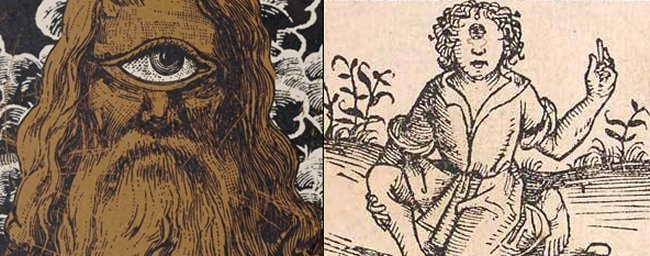
Arimaspians: Mysterious Mighty One-Eyed People From The North
Ancient myths and legends about mysterious one-eyes people are not uncommon. For example, Greek records mention the Arimaspians, a tribe of normal human-sized horsemen with only one eye in the middle of their forehead.
Updated on July 27, 2022
Written by Ellen Lloyd – AncientPages.com
Copyright © AncientPages.com All rights reserved. This material may not be published, broadcast, rewritten or redistributed in whole or part without the express written permission of AncientPages.com
Expand for referencesMore From Ancient Pages
-
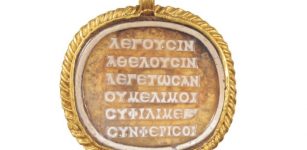 Almost Unknown Ancient Greek Text Rewrites History Of Poetry And Song
Archaeology | Sep 9, 2021
Almost Unknown Ancient Greek Text Rewrites History Of Poetry And Song
Archaeology | Sep 9, 2021 -
 Legend Of The Ruthven Barracks Where Alexander Stewart Played Chess With The Devil
Featured Stories | Jan 27, 2022
Legend Of The Ruthven Barracks Where Alexander Stewart Played Chess With The Devil
Featured Stories | Jan 27, 2022 -
 How Did St. Nicholas Become Santa Claus? – History, Legend And Tradition
Featured Stories | Dec 22, 2023
How Did St. Nicholas Become Santa Claus? – History, Legend And Tradition
Featured Stories | Dec 22, 2023 -
 Mysterious Standing Deer Stones Of Mongolia -Their Purpose And Creators Remain Unknown
Featured Stories | Jun 18, 2014
Mysterious Standing Deer Stones Of Mongolia -Their Purpose And Creators Remain Unknown
Featured Stories | Jun 18, 2014 -
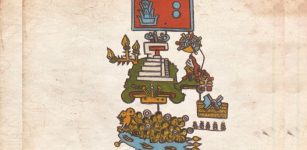 Pictograms: First Written Accounts Of Earthquakes In Pre-Hispanic Mexico
Archaeology | Aug 27, 2021
Pictograms: First Written Accounts Of Earthquakes In Pre-Hispanic Mexico
Archaeology | Aug 27, 2021 -
 African Stonehenge – Extraordinary Stone Circles Of Senegambia – Who Were The Unknown Builders?
Civilizations | Mar 29, 2014
African Stonehenge – Extraordinary Stone Circles Of Senegambia – Who Were The Unknown Builders?
Civilizations | Mar 29, 2014 -
 What Were The Strange Objects Biblical Adam Received From Divine Beings?
Biblical Mysteries | Jul 13, 2020
What Were The Strange Objects Biblical Adam Received From Divine Beings?
Biblical Mysteries | Jul 13, 2020 -
 Ancient City Of Hippos-Sussita And The Mysterious Disc-Shaped Copper Plates
Archaeology | Apr 18, 2017
Ancient City Of Hippos-Sussita And The Mysterious Disc-Shaped Copper Plates
Archaeology | Apr 18, 2017 -
 Karakorum – Genghis Khan’s Headquarters And Important City In History Of Silk Road
Civilizations | Mar 26, 2016
Karakorum – Genghis Khan’s Headquarters And Important City In History Of Silk Road
Civilizations | Mar 26, 2016 -
 On This Day In History: Battle Of Naulochus Was Fought Off The Coast Of Sicily – On Sep 3, 36 BC
News | Sep 3, 2015
On This Day In History: Battle Of Naulochus Was Fought Off The Coast Of Sicily – On Sep 3, 36 BC
News | Sep 3, 2015 -
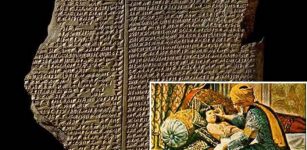 Clay Tablets Reveal Sumerian Doctors Treated Disease With Spells Of Magic And Medicine
Archaeology | Feb 13, 2018
Clay Tablets Reveal Sumerian Doctors Treated Disease With Spells Of Magic And Medicine
Archaeology | Feb 13, 2018 -
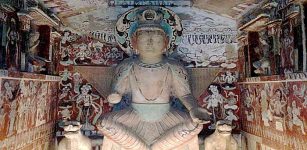 Mogao Grottoes, Dunhuang, China – Fascinating Statues, Manuscripts And Wall Paintings
Featured Stories | Dec 15, 2015
Mogao Grottoes, Dunhuang, China – Fascinating Statues, Manuscripts And Wall Paintings
Featured Stories | Dec 15, 2015 -
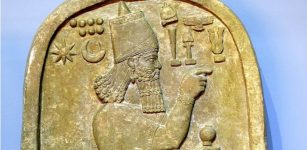 Stele Of Tell al-Rimah And Deeds Of Assyrian King Adad-nirari Against Rebellious Kings
Featured Stories | Feb 22, 2022
Stele Of Tell al-Rimah And Deeds Of Assyrian King Adad-nirari Against Rebellious Kings
Featured Stories | Feb 22, 2022 -
 On This Day In History: British Forces Captured Gibraltar – On August 3, 1704
News | Aug 3, 2016
On This Day In History: British Forces Captured Gibraltar – On August 3, 1704
News | Aug 3, 2016 -
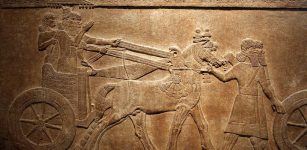 Pax Assyriaca: Important Time For The Neo Assyrian Empire And Surrounding Regions
Ancient History Facts | Aug 11, 2016
Pax Assyriaca: Important Time For The Neo Assyrian Empire And Surrounding Regions
Ancient History Facts | Aug 11, 2016 -
 Massive trophy skull rack discovered in the Aztec ruins
Artifacts | Aug 22, 2015
Massive trophy skull rack discovered in the Aztec ruins
Artifacts | Aug 22, 2015 -
 Young Warrior’s Grave Dated To A Sixth Century Unearthed At Langobard Necropolis In Czech Republic
Archaeology | Jul 5, 2022
Young Warrior’s Grave Dated To A Sixth Century Unearthed At Langobard Necropolis In Czech Republic
Archaeology | Jul 5, 2022 -
 On This Day In History: George Plantagenet Privately Executed At The Tower Of London – On Feb 18, 1478
News | Feb 18, 2017
On This Day In History: George Plantagenet Privately Executed At The Tower Of London – On Feb 18, 1478
News | Feb 18, 2017 -
 Enigma Of Ancient Upside Down Stairs At Sacsayhuamán
Featured Stories | May 27, 2014
Enigma Of Ancient Upside Down Stairs At Sacsayhuamán
Featured Stories | May 27, 2014 -
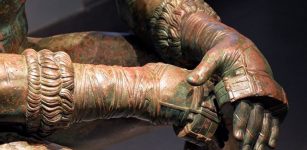 Boxer At Rest – Rare Sculpture And Masterpiece Of Hellenistic Bronze Art
Artifacts | May 21, 2021
Boxer At Rest – Rare Sculpture And Masterpiece Of Hellenistic Bronze Art
Artifacts | May 21, 2021



